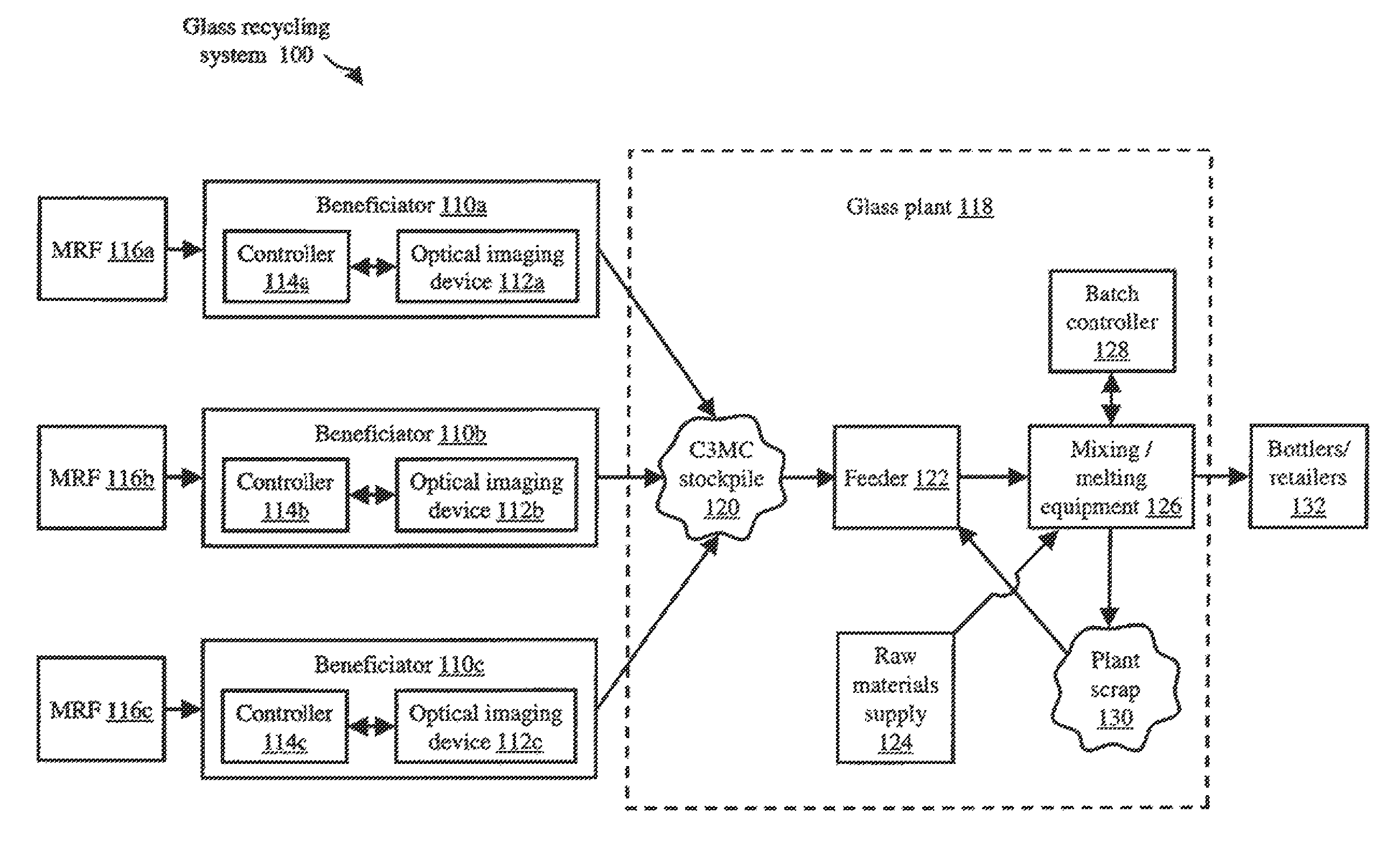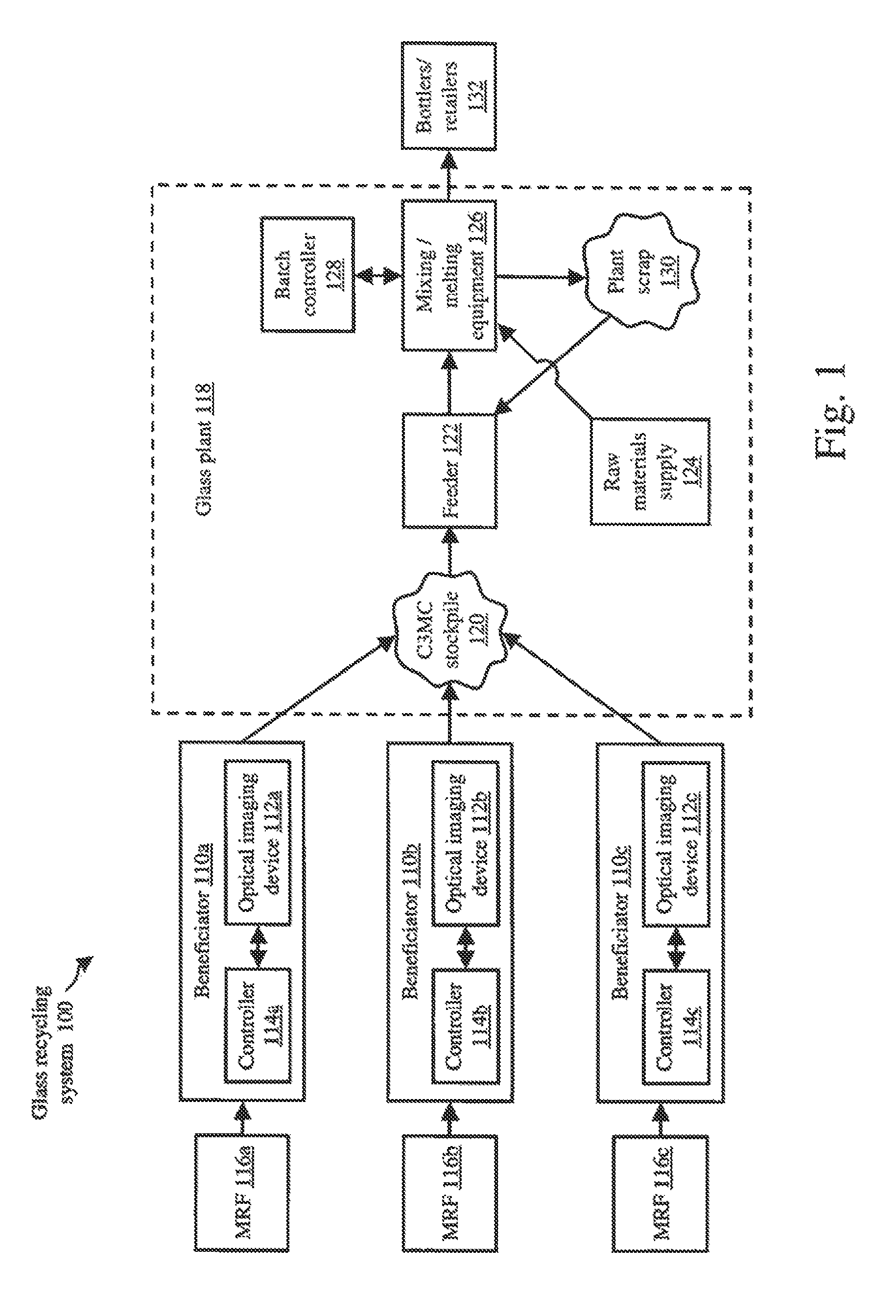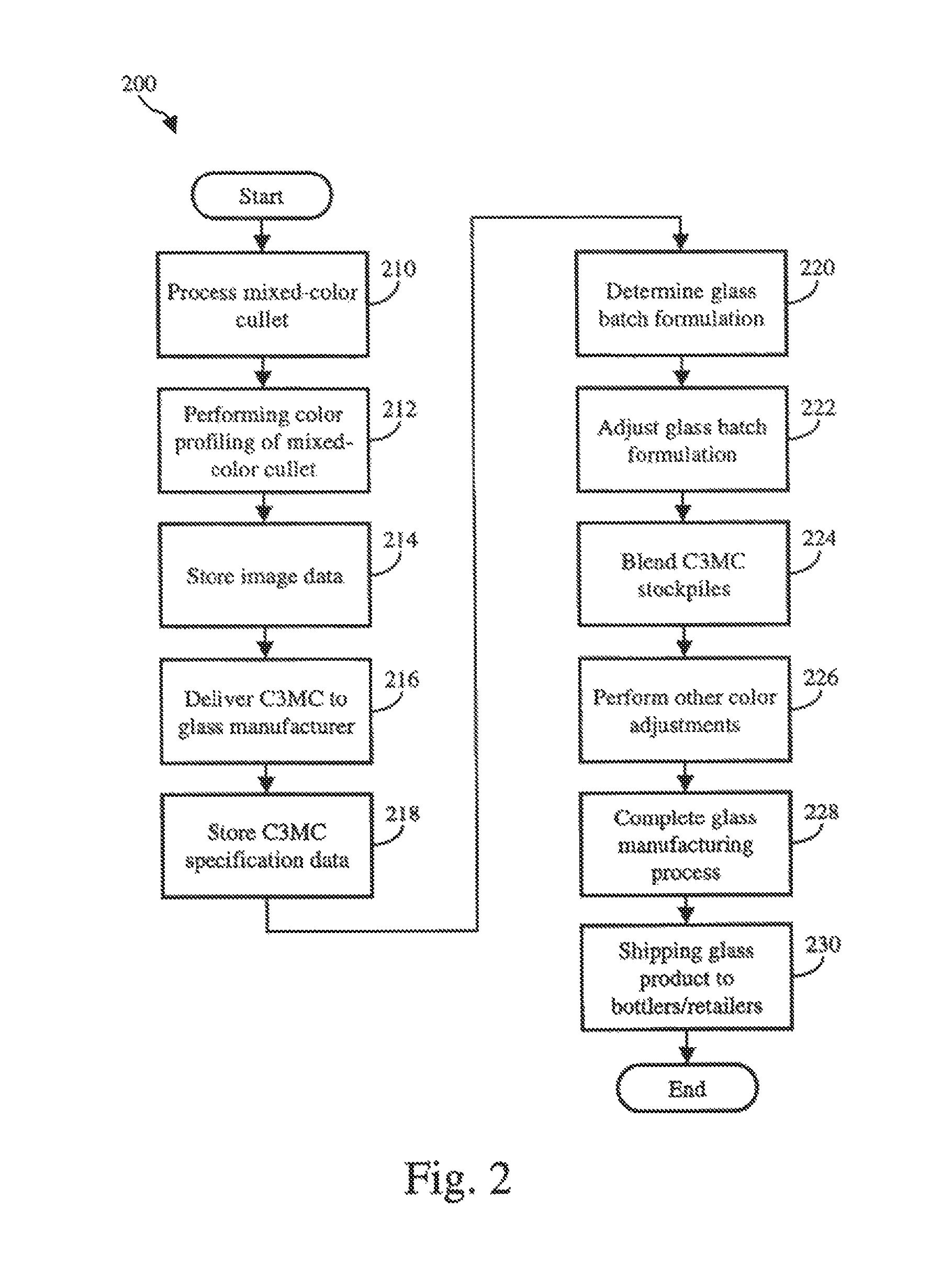System for and method of mixed-color cullet characterization and certification, and providing contaminant-free, uniformly colored mixed-color cullet
a technology of mixed cullet and characterization method, which is applied in the field of glass production, can solve the problems of shattered glass quantity during processing, beneficiator is forced to try the difficult and costly task of optically sorting these stockpiles, and the commercial use of mixed cullet is limited
- Summary
- Abstract
- Description
- Claims
- Application Information
AI Technical Summary
Benefits of technology
Problems solved by technology
Method used
Image
Examples
Embodiment Construction
[0016]Embodiments of the present invention are directed to systems and methods of characterizing and certifying mixed color cullet produced by beneficiators and / or material recovery facilities (MRFs). Although three color mixed-cullet (C3MC) is generally referred to herein, the present invention may also be equally utilized in connection with any type of mixed cullet, such as two-, four-, or five-color mixed cullet.
[0017]Providing C3MC profile data with shipments of C3MC produced by a beneficiator and / or MRF allows glass manufacturers / plants to know the relative color composition of the C3MC, and thus make adjustments to the glass formulation to ensure that the end-product meets a predetermined color specification. Additionally, the compilation and storage of C3MC profile data provides a way to track C3MC composition over time, which may affect orders, pricing, composition requests, process management, and / or contract negotiations. Additionally, because the color composition of C3MC...
PUM
| Property | Measurement | Unit |
|---|---|---|
| size | aaaaa | aaaaa |
| weight | aaaaa | aaaaa |
| size | aaaaa | aaaaa |
Abstract
Description
Claims
Application Information
 Login to View More
Login to View More - R&D Engineer
- R&D Manager
- IP Professional
- Industry Leading Data Capabilities
- Powerful AI technology
- Patent DNA Extraction
Browse by: Latest US Patents, China's latest patents, Technical Efficacy Thesaurus, Application Domain, Technology Topic, Popular Technical Reports.
© 2024 PatSnap. All rights reserved.Legal|Privacy policy|Modern Slavery Act Transparency Statement|Sitemap|About US| Contact US: help@patsnap.com










